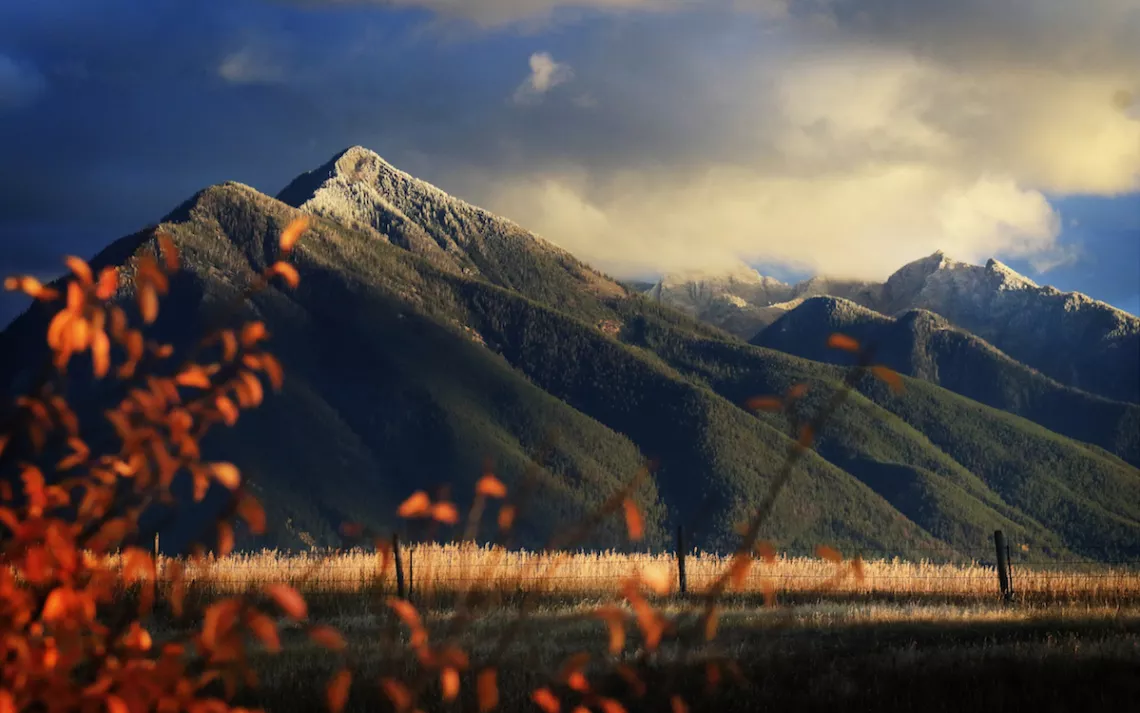Montana’s Paradise Valley Is More Valuable Than Gold
Interior Secretary Zinke bans mining on Yellowstone’s doorstep

Photo by HRossD/iStock
This week, Interior Secretary Ryan Zinke ordered a 20-year ban on new mining claims in a 30,000-acre area north of Yellowstone National Park. The order extends a two-year ban signed by the Obama administration in 2016 that was set to expire in November.
"I fully support multiple use of public lands,” Zinke said in a statement. “But multiple use is about balance and knowing that not all areas are right for all uses.”
Zinke signed the order Monday at an outdoor ceremony in Paradise Valley, where the Yellowstone River flows through the Absaroka Range on its way to the plains of eastern Montana. The 10,926-foot Emigrant Peak stood half-shrouded in clouds over Zinke’s shoulder as he told local business owners, conservationists, and reporters, “I’m a pro-mining guy. But there’s places to mine and places not to mine.”
The Interior Department decision marks a victory for local conservationists and business owners who have fought two mining proposals in particular.
In 2015, British Columbia–based Lucky Minerals submitted a plan to open an operational gold mine in Emigrant Gulch, beneath the eastern face of Emigrant Peak. That same year, Crevice Mining Group, a company out of Spokane, Washington, also proposed a mine a few miles south on Crevice Mountain near Jardine, Montana.
“There’s a massive amount of gold up there,” Crevice Mining Group’s Michael Werner told the Billings Gazette. “If this was Nevada, we’d have an open pit.”
But a proposed mine within sight of the nation’s first national park sparked intense local opposition, not only from environmentalists but also from members of Congress on both sides of the political aisle.
During his stint as Montana’s lone House representative, Zinke opposed the two mining claims. His successor, Representative Greg Gianforte, another typically pro-extraction Republican, felt the same way about protecting Yellowstone’s northern entrance. “Paradise Valley is well known for its fishing, hunting, hiking, and recreation that are cornerstones of the area’s growing tourism industry,” Gianforte said in a 2017 statement introducing his Yellowstone Gateway Protection Act, which mirrored Montana Democrat Jon Tester’s bill introduced earlier that year in the Senate.
Local environmentalists from the Greater Yellowstone Coalition and the Park County Environmental Council have spent the last three years fighting the mining claims in their valley. Earlier this year, Earthjustice represented the two groups in a lawsuit against Lucky Minerals, in which a district court ruled that the Montana Department of Environmental Quality illegally approved a gold-exploration drilling license without considering the impacts on wildlife and water quality in the Yellowstone River tributaries. In a statement, Greater Yellowstone Coalition executive director Caroline Byrd took the court’s ruling as “simply more proof that Yellowstone is more valuable than gold.”
Zinke’s 20-year ban doesn’t halt all mining activity in the area. Crevice Mining Group still has permission from the state of Montana to mine private land claims, as long as its surface disturbance doesn’t exceed five acres. Lucky Minerals plans to drill on private land near Emigrant Gulch next year and says it intends to sue the U.S. government for withdrawing its claims on federal forest land without compensation. “It’s not over for us,” Lucky Minerals president John Mears told the Bozeman Daily Chronicle. “We will fight.”
But according to a statement from the Greater Yellowstone Coalition, Zinke told the crowd on Monday that despite Lucky’s existing claims, conservationists and residents in Paradise Valley can “sleep well tonight.”
 The Magazine of The Sierra Club
The Magazine of The Sierra Club



